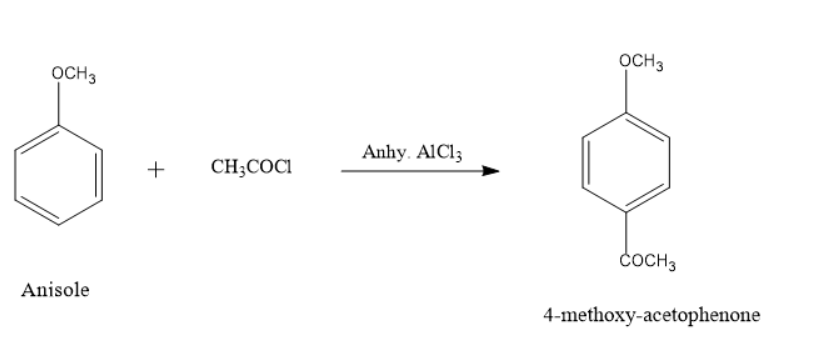
What is the IUPAC name of acetylation product of
Answer
409.5k+ views
Hint: First step to solve the answer is to find the acetylation product of
Complete Answer:
The process where an acetyl group is added to a compound because of its replacement with that of an active
Now that we know the acetylation process, we can determine the product.
When
In the reaction only major product is shown which is an ortho product. The alkoxy group is always an ortho-para directing in electrophilic aromatic substitution reactions.

The major product name is
Note:
There are many other examples of acetylation. One of them is acetylation of glucose where bond formation takes place between the extra electrons of nucleophilic
Complete Answer:
The process where an acetyl group is added to a compound because of its replacement with that of an active
Now that we know the acetylation process, we can determine the product.
When
In the reaction only major product is shown which is an ortho product. The alkoxy group is always an ortho-para directing in electrophilic aromatic substitution reactions.

The major product name is
Note:
There are many other examples of acetylation. One of them is acetylation of glucose where bond formation takes place between the extra electrons of nucleophilic
Recently Updated Pages
Master Class 9 General Knowledge: Engaging Questions & Answers for Success

Master Class 9 English: Engaging Questions & Answers for Success

Master Class 9 Science: Engaging Questions & Answers for Success

Master Class 9 Social Science: Engaging Questions & Answers for Success

Master Class 9 Maths: Engaging Questions & Answers for Success

Class 9 Question and Answer - Your Ultimate Solutions Guide

Trending doubts
Give 10 examples of unisexual and bisexual flowers

Draw a labelled sketch of the human eye class 12 physics CBSE

Differentiate between homogeneous and heterogeneous class 12 chemistry CBSE

Differentiate between insitu conservation and exsitu class 12 biology CBSE

What are the major means of transport Explain each class 12 social science CBSE

Why is the cell called the structural and functional class 12 biology CBSE




